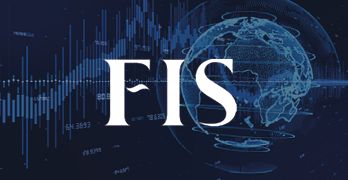FBX Index September: Looking forward

Quite a depressing picture for some, exceptional for others, as we see a wholesale drop in all fronthaul spot prices out of Asia. However, critically, the pace of declines has been slowed substantially into Europe and the Mediterranean compared to transpacific routes. Much of the pressure on spot prices has been a direct result of the alleviation of port congestion (particularly on the US West Coast) and destruction of demand, with a slow down in spot price drops potentially a result of Q3 cargoes temporarily stemming the drop off in demand.
On the full Cal23 contract (a contract that could be used by US BCOs to hedge the 2023 period), prices have dropped in tandem with the Q4, down -48.47% from a high on 19 May- the Cal23 value is now $5,925. This makes futures contracts on the core Asia-US West Coast front haul as much as 43.50% lower than three-year contracts agreed around the $10,500/FEU level. These markets are now also testing the lower level of the long-term contract market at $5,000/FEU.
In numbers, FBX01 China/East Asia to North America West Coast has seen a 42.25% drop in spot prices since 6 June. This has had an extended impact on the value of futures contracts that have now dropped below many physical contract prices (even those fixed for three years) – Q4(22) has seen a 54% drop from its high of $12,500 on 3 May 2022, now sitting at $5,750. On the full Cal23 contract (a contract that could be used by US BCOs to hedge the 2023 period), prices have dropped in tandem with the Q4, down -48.47% from a high on 19 May- the Cal23 value is now $5,925. This makes futures contracts on the core Asia-US West Coast front haul as much as 43.50% lower than three-year contracts agreed around the $10,500/FEU level. These markets are now also testing the lower level of the long-term contract market at $5,000/FEU.
On top of this, FBX-Linked physical contracts (much like index-linked contracts already used on the Asia-Europe tradelane) are now being offered by several freight forwarders on the Asia-US trades. This is a substantial shift considering the relative dominance of annual contracts pre-2020 and the move towards longer-term fixed priced contracts fixed at the height of the market earlier this year and late in 2021.
We’ve seen similar moves on the FBX03 China/East Asia to North America East Coast route, with spot prices on the index down less, dropping off 23.81% since 6 June. As with FBX01, FBX03 futures prices have been moving down in correlation, with the Cal23 down -41.17%, valuing today at $7,500/FEU. Again, as with FBX01, the FBX03 Cal23 value is testing the value of some of the best value three-year contracts priced in at $7,000 into the East Coast. As a result, the futures market has started to see more buying interest from freight forwarders and BCOs looking to utilize market value to hedge prices. On top of this, FBX-Linked physical contracts (much like index-linked contracts already used on the Asia-Europe tradelane) are now being offered by several freight forwarders on the Asia-US trades. This is a substantial shift considering the relative dominance of annual contracts pre-2020 and the move towards longer-term fixed priced contracts fixed at the height of the market earlier this year and late in 2021.
Crucially, FBX13 China/East Asia to the Mediterranean, which had been pricing at a vast premium over FBX11, has dropped -22.01% since 6 June. This makes FBX11 a viable index to hedge for shippers moving into the Mediterranean, with more liquidity available on FBX11 versus FBX13.
On the Asia-Europe route, ports have been plagued by disruption linked to a mixture of strike action (primarily in the Port of Hamburg and the Port of Felixstowe) and the impacts of drought on the Rhine River, tightening trucking capacity and arguably making congestion at ports worse due to delayed onshore deliveries. This congestion has been felt in spot prices, with the FBX11 China/East Asia to North Europe spot prices only dropping -9.73% since 6 June. In line with this, the futures contracts (particularly Q422) have seen much less of a drop than that on the Transpacific. Q422 has slipped -3.06% from its high on 8 March, now $9,500/FEU. Cal23 has been actively traded and has seen a drop down -7.78% since 01 February, valuing in at $7,700 on 31 August. Crucially, FBX13 China/East Asia to the Mediterranean, which had been pricing at a vast premium over FBX11, has dropped -22.01% since 6 June. This makes FBX11 a viable index to hedge for shippers moving into the Mediterranean, with more liquidity available on FBX11 versus FBX13.
Moving forward, the development of prices has triggered more activity from BCOs looking to renew their hedging mandates (previously covered by annual contracts that tended to brake under intense market pressures) using futures. The futures market has also pulled in participation from ship owners looking to hedge a time-charter market that has gradually degraded in line with the underlying markets. Now could be an excellent time to lock in already heavily discounted futures rates against what is an systemically uncertain and volatile market.
About Peter Stallion, Head of Air and Containers, Freight Investor Services
Peter Stallion heads up the Air and Container Freight desks at FFA brokerage Freight Investor Services. He started his career in air freight chartering, and has a passion for emerging risk management markets and the logistics industry.
Receive monthly container market reports direct to your inbox.